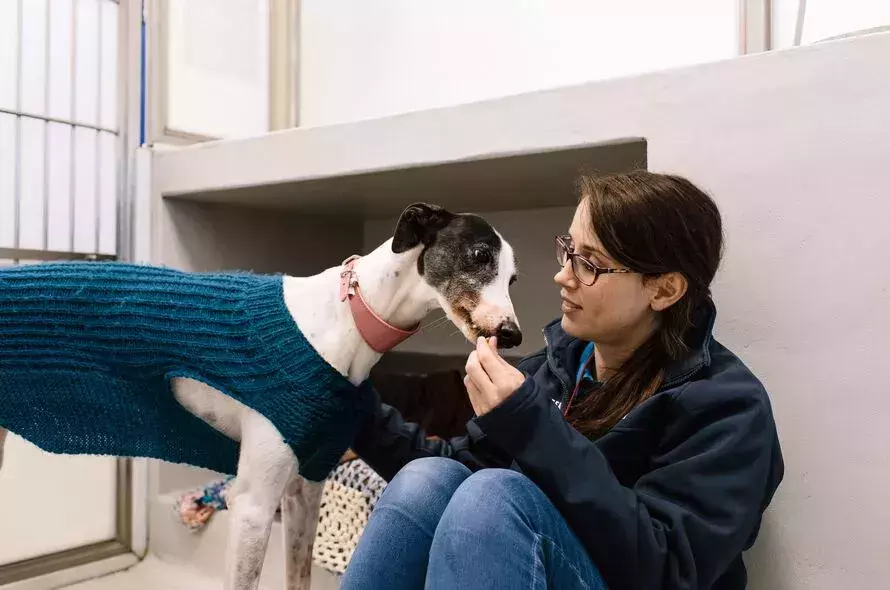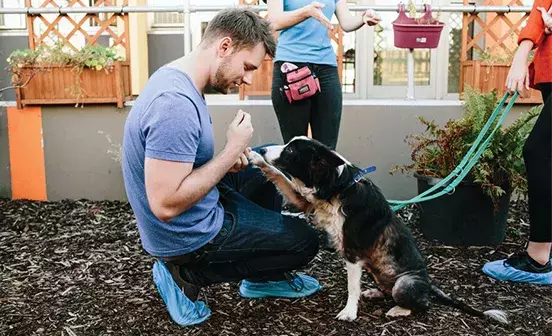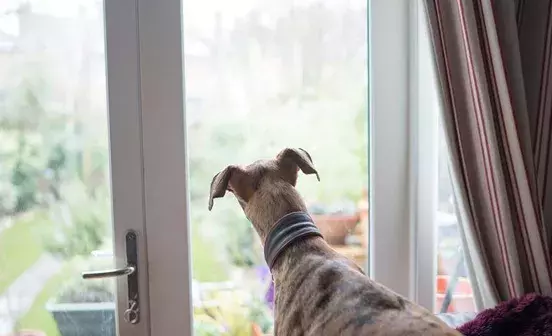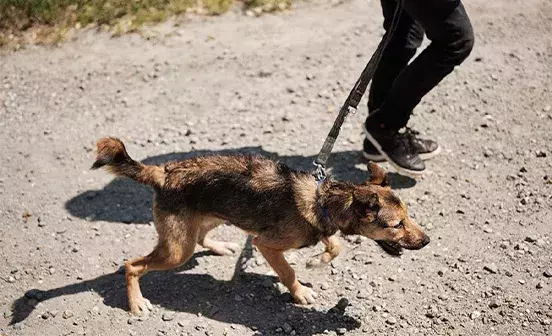Dogs can react to strangers and people they don't know for a few different reasons. They might be frustrated because they can't contain their excitement to meet people, or sometimes it can be out of fear because they are worried by these people they don't know.
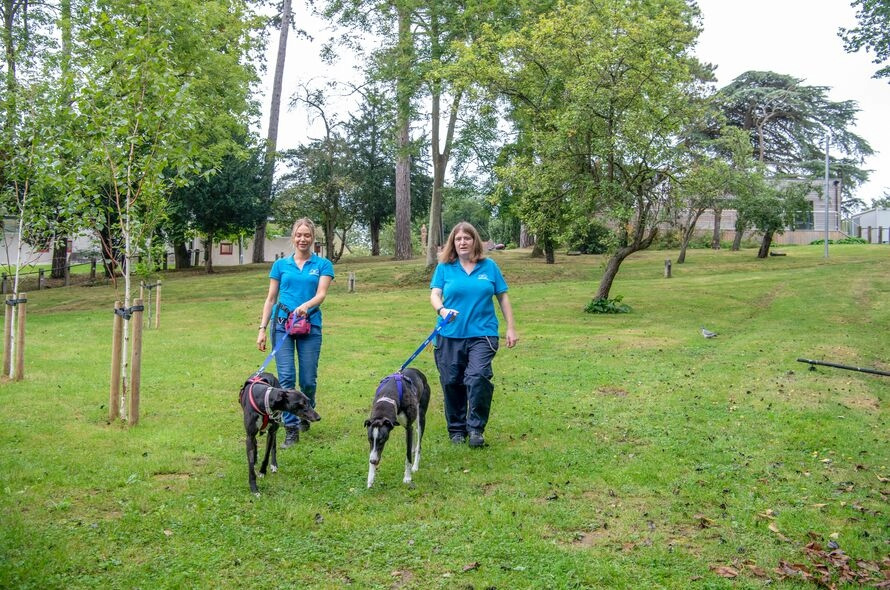
Barking, lunging and growling are a dog's way of communicating that they are trying to put more space between themselves and the stranger. However, some dogs might show more subtle signs instead, like avoiding approaching the person, looking away or putting their ears back. It is always worth seeking advice from a behaviourist to understand the reasons for your dog's behaviour and then to address the root cause.
Take a look at our video on building your dog's confidence around strangers, or follow the steps below:
View the audio transcript for this video
Try to avoid situations with lots of strangers
The first thing to do is try to minimise the number of situations where your dog encounters people and feels the need to react. This will help to prevent the behaviour from getting worse and hopefully avoid your dog learning that reacting works and makes people move away. When you are out on walks, try to maintain the distance from people that your dog is comfortable with. This might involve safely crossing the road so that strangers don’t try to approach them head-on, walking on quieter routes, or going out at quieter times.
Consider using a muzzle
A muzzle often acts as a visual aid to indicate to people that they should give your dog extra space. That extra space can be useful for a dog who's not comfortable with strangers. It is also likely to stop people going straight in to say hello to your dog without asking, which can make them uncomfortable and then trigger a reaction. We would recommend introducing your dog to a Baskerville type muzzle. If they're not already comfortable with them, take a look at our advice on getting your dog used to wearing a muzzle.
Find your dog's “bubble”
It’s useful to understand the smallest distance from a person that your dog is happy with. To do this, imagine your dog has a bubble of personal space around them. Each dog's bubble will be a different size and their bubble will change in size throughout the day depending on how calm or relaxed they are. The more relaxed they are, the smaller the bubble will be and the more that they can cope with, but if lots of stressful things have happened, the bubble might get bigger, and they might not be able to cope even when they see somebody at a bigger distance.
Try to keep a diary and watch your dog carefully when you're on walks to identify any patterns in the people they struggle the most with and the distances at which they start to find it difficult to cope. You might find that your dog is okay while somebody is walking away from them, but if they come straight towards your dog, they may find it scarier and struggle more.
Stay calm and try not to pull on the lead
It's also important to think about what you are doing on a walk. For example, if you see a person and suddenly tighten the lead and change your behaviour, this may indicate to your dog that something is about to happen and make them more alert. Sudden pressure on the lead can increase their anxiety, as they may feel restricted and unable to move. Try to remain calm and relaxed and don't anticipate stress before it happens. If your dog feels like they don't have any other options, they will react more, which will trigger a bigger response.
This often leads to a dog using aggression as a way of communicating that they need space. It's a good idea to practice basic training at home, such as loose lead walking and teaching your dog a 'watch me' cue, so that you can keep your dog walking by your side without any pressure being applied to the lead.
Change your dog's response to people using rewards
To change your dog's reaction to new people, you want to change the emotion that your dog feels when they see someone new. To do this, we need to find something your dog values very highly, such as a specific tasty treat, and then associate that with strangers. With treats in your hand, head out for a walk. As always, consider how busy the route will be and how popular the time of day is wherever you are heading to and try to set your dog up for success. As you walk, watch your dog carefully and as soon as they notice a person, calmly acknowledge that they have seen them with a marker word such as ‘yes’ or ‘good,’ and then reward them with a treat.
Ideally as you give the reward you want to keep encouraging them and also move your dog away from the stranger. This means your dog gets two rewards; a tasty treat and an increase in distance from the person, which is what they wanted. Gradually over time, and with lots of repetition, this should hopefully start to reduce your dog's fear of strangers and change their perception. You might even find that when they see somebody, they start to look back at you excited and expecting a treat.
